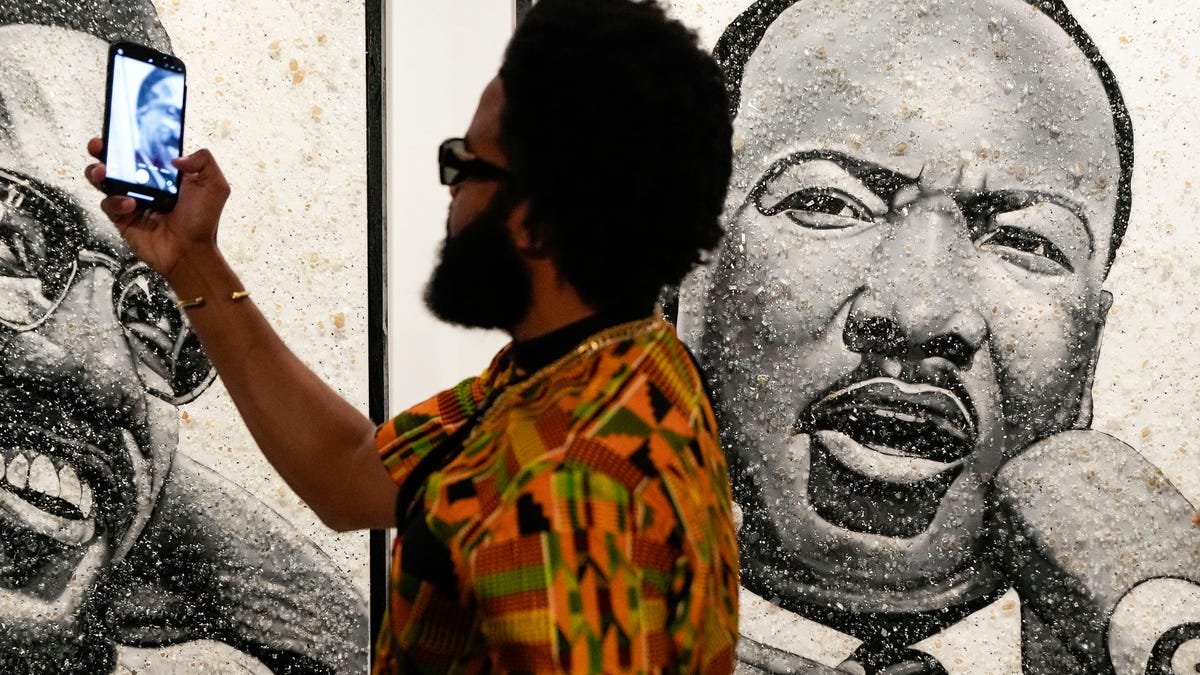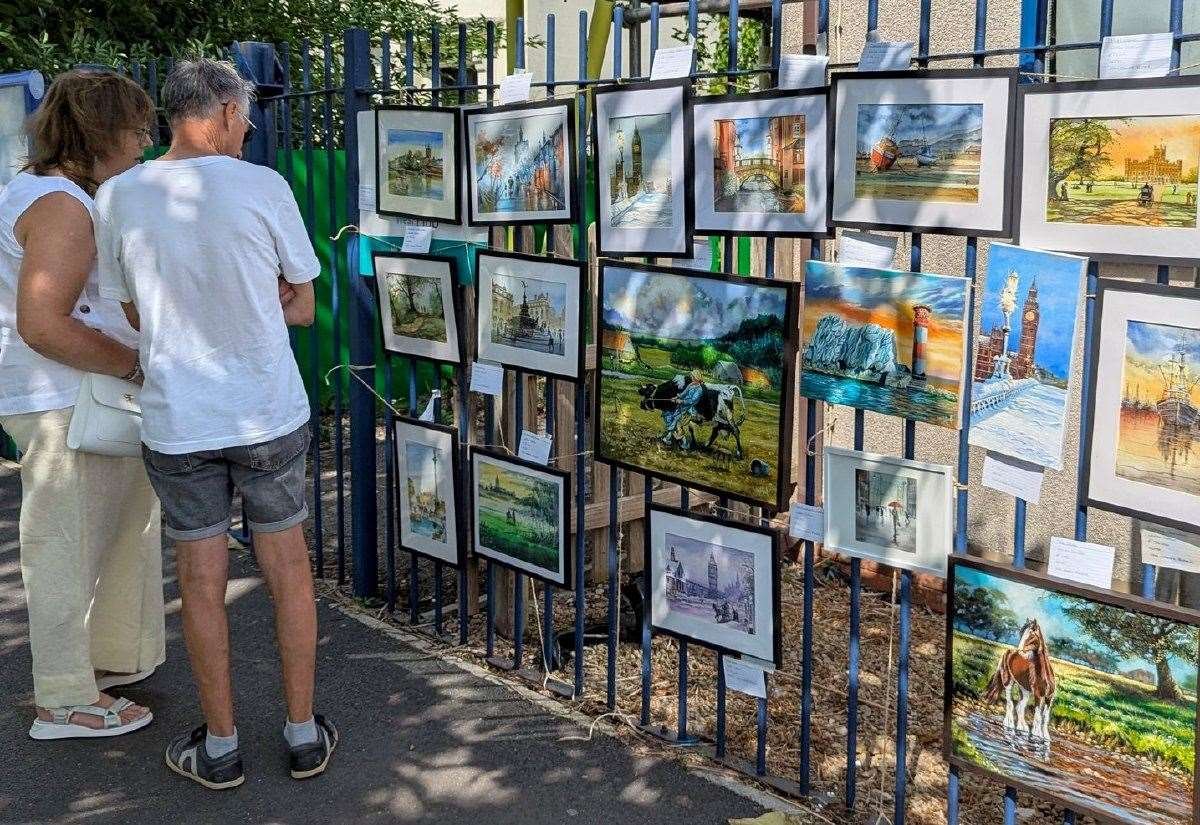Is life all a matter of perspective? That, surely, is one of the central tenets of any field of art whereby, for example, members of the viewing public go along to a gallery or museum to peruse the fruits of some artist’s gifts, skill, and creativity, not to mention blood, sweat, and tears, and summarily pass judgment on the visual bottom line.
The viewpoint aspect – cerebral, as well as physical – resonates prominently in Uri Gershuni’s “Earth to Earth” photography exhibition currently on display at the Tel Aviv Museum, in more senses than one.
Gershuni, who spends most of his time in Spain, is a storyteller. As an artist, that generally goes with the professional creative territory. But “Earth to Earth,” curated by Dalit Matatyahu, also seems to allow the observers to do much of the i dotting and t crossing for themselves.
There is a lot of ostensibly empty space in Gershuni’s prints. That leaves plenty of room for visual and cerebral maneuver. The exhibition incorporates two series of pictures which primarily feature clouds, open tracts of land, and light aircraft. The latter could possibly pertain to a yesteryear stage of technological advancement, flying across the sky and, by extension, our field of vision and comprehension.
The throwback element is not serendipitous. The land and airplane shots were taken in the Gan Rashal neighborhood at the interface of Herzliya and Ra’anana, which was established in the early years of the state. This was the backdrop to Gershuni’s earliest memories growing up in the family home built there by his agronomist grandfather Zvi Gershuni. Sadly, Grandpa Zvi was killed in a traffic accident, and Gershuni’s famed artist father, Moshe, was forced to take over the domestic and breadwinning reins at an early age.
The indeterminacy of the chronological sequence facilitates a degree of time traveling, with the monochrome photographs conjuring up ghosts of the past, as well as a powerful link to the land.
There is an ebb-and-flow ethos to the exhibition, on various levels. There are Gershuni’s deep roots and relationship with this country, and there is the flip side apparent incongruity of his current choice of residence in Majorca, Spain. Then again, that is in the same general Mediterranean meteorological and cultural sphere and, as such, shares common denominators with Gershuni’s native stomping ground.
Indeed, that was the catalyst for much of the body of work at the museum, or the cement that provided the artist with a feeling of continuity between the Spanish island and his birthplace. “I live in a rooftop apartment in Majorca, and I didn’t find anything to inspire me there,” he states. “Everything there is perfect and too pretty for me. I need some impairment, something damaged to spark my imagination.”
That sounds like a nice sort of problem to have on a day-to-day basis, living in idyllic existential conditions without the constant tension, pressures, and struggle for survival that is the lot of the majority of us living here. Gershuni found motivational salvation in his celestial vicinity. “One day I looked up, and I imagined that the very same clouds I’d photographed just a couple of months earlier at the border of Herzliya and Ra’anana had been blown to me with the wind. I thought that, really, I could take photos of my own home environment, too.”
Clouds are an intriguing, and frustrating, source of aesthetic fueling. They are always on the move and forever changing shape. It is very much a matter of passively observing and waiting for the unpredictable to transpire, and then grabbing the fleeting moment with both hands or, at least, by applying a finger to a camera release or cellphone button.
“It is a sort of paradox,” Gershuni notes. “There is photography which tries to grasp reality and not let it disappear and dissipate into the depths of oblivion. I try to capture the moment, but a cloud is the most non-object of objects. It doesn’t have a shape or an outline. It is constantly changing. It is almost entirely wind and is devoid of physicality or tactility.”
That’s quite a conundrum, but it is a challenge any artist should be capable of addressing or at least be willing to rise to. Gershuni honed his cloud-snapping strategy. “I catch them at a very specific moment. I document them in isolation, when they moved away a little from the flock, from the herd.” Gershuni imperceptibly drifts into the all-too-burning issue of social alienation. “They are on their own in the sky, with no friends and no one to talk to.”
There are some deep-seated religious scripture inferences in there too, as Gershuni reflects on a theophanic juncture in the Jewish-Hebrew timeline. “Think of the Bible, when God reveals Himself as a pillar of cloud, leading the Children of Israel through the desert.”
Gershuni says you can really go to town on the amorphous celestial bodies. “You can project all sorts of things on clouds. Children – and the child inside all of us – may see a teddy bear shape in a cloud or anything,” he says, laughing before returning to divine domains. “A cloud is a bit like God,” he posits. “It doesn’t have a body, or the figure of a body but, in fact, it is everything.”
As we move around the exhibition space, I espy a cloud that looks like a genuine corporeal being which you can almost reach out and hold. “That is the illusion,” says Gershuni. “You see it, reach out to touch it, and there’s nothing there.” Sounds something like the creative process in reverse.
The decision to use monochrome film adds to the sense of nebulousness, along both physical and temporal lines. Black-and-white photography generally sends our minds back to the past, and it also allows us to complete the chromic picture with our own imagination. “You can project lots of things on monochrome prints,” Gershuni suggests. “First and foremost, black-and-white detaches you from place and time.”
He adds that it doesn’t necessarily mean a cerebral trip to yesteryear climes. “These days, photography can fake anything,” he smiles. “It is open and versatile, and it offers a very rich palette [of possibilities]. Black-and-white is not just an indicator of something historic. But because it deviates from actual [full color] reality, it doesn’t place you in the here and now.” He didn’t exactly use state-of-the-art equipment for the clouds and Gan Rashal ventures, either.
The ‘Earth to Earth’ project
THAT SUITS Gershuni and his “Earth to Earth” project. “It means you can oscillate between times, between Herzliya of 2022 but, at the same time, I also wander through the realms of my childhood there in the 1970s. I was a child in the exact same plots of land in which I walked around and picked oranges and trod on cow pats. There were six cousins. We were a gang, and we spent our childhood there. I lived in Ra’anana, but my formative-charged memories are from there.”
Cherished memories of boyhood bucolic exploits apart, Gershuni was keen to capture a bit of the spirit of those now far-flung halcyon days. “I hardly took any photographs in Israel before this project, certainly nothing direct and documentary. I took portraits of people here but not of the place, the country, the environment. If I took pictures of a place, it was generally elsewhere. I did a project in England based on the history of photography.”
It was, it seems, time to come home – at least for a while, with camera in hand. “This is more or less the first time I came back to the place I’d grown up in and observed it, and reflected on it.”
That may have something to do with setting up home in foreign climes, which may have afforded Gershuni the advantage of physical and emotional distance, and allowed him to look in from the outside, along with his deep emotional attachment to the neighborhood. “This project started before we relocated, but we knew it was going to happen some time soon,” he notes. “The last moment before we left sparked the need to cling onto the land, the roots, to understand that I have roots – just before I uproot them.”
There were other moments of disengagement and divergence. “My father died [in 2017], and then my mother [in 2020] really began this whole thing. We came back to my mother’s house, to pack things up and take our leave. That led to the desire to go to Gan Rashal. It was a parting of the ways and capturing the memories.”
Gershuni’s parents and grandfather Zvi may have passed on, but their spirit – and Gershuni’s heart – are still very much there. Perhaps some of that is still floating around in the clouds as they wend their way between there and here, and then and now.
‘Earth to Earth’ closes July 20. For more information: www.tamuseum.org.il/en/




